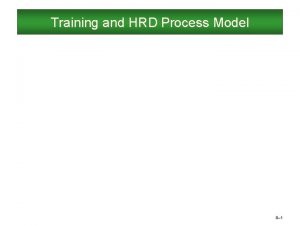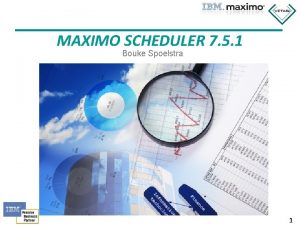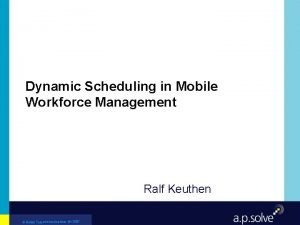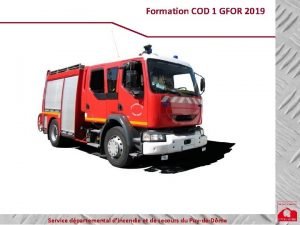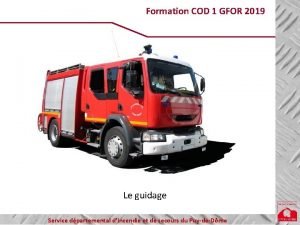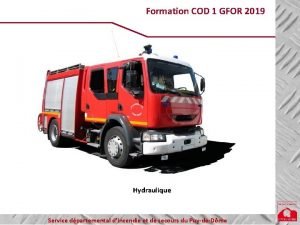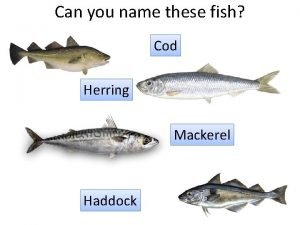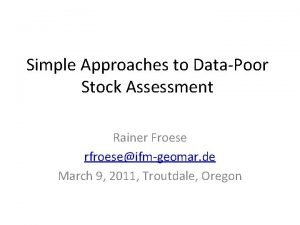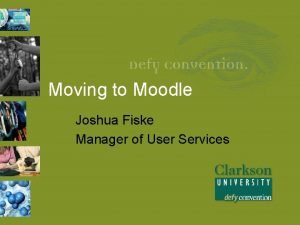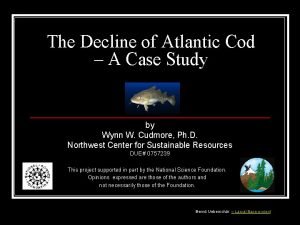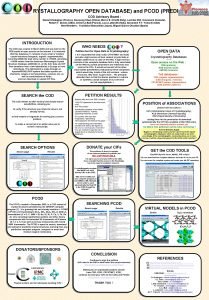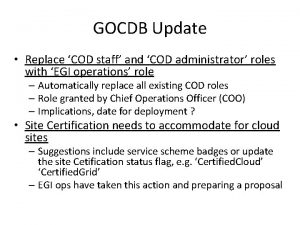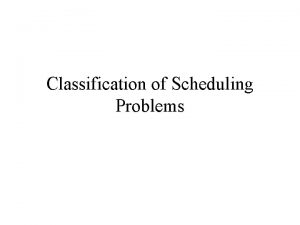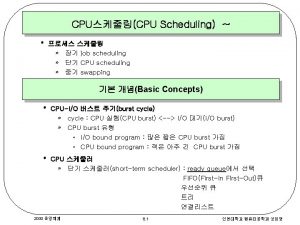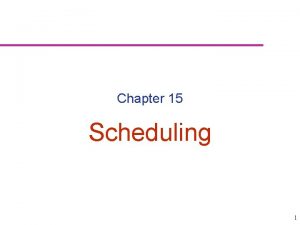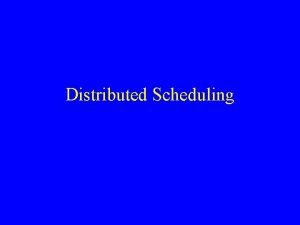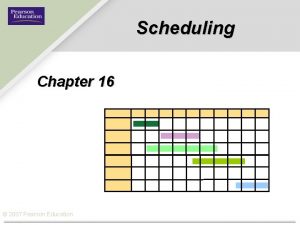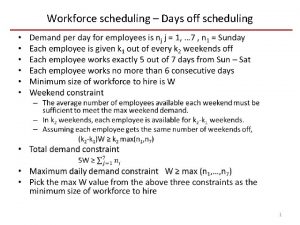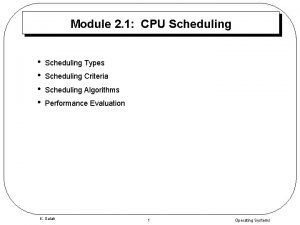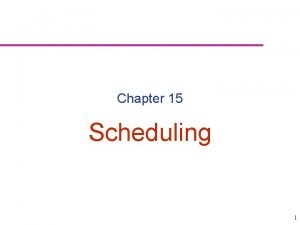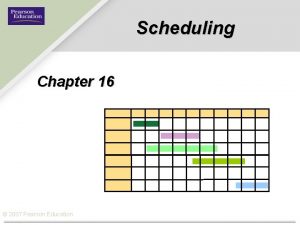WSJF and COD Prioritizing and Scheduling Work Hans



























- Slides: 27

WSJF and COD Prioritizing and Scheduling Work Hans Samios @ Focussed Agile 2017 © Focussed Agile LLC

Agenda • How to best use known capacity? • Is there a better way to schedule work? • Introducing Co. D and WSJF • Benefits of Co. D and WSJF

How to best use known capacity?

What are the problems with our implementation decisions? • • Encourages “big bets” thinking for projects For projects often require a long time to develop justification Typically considers “sunk cost” as justification to continue investment Typically made in silos • For example, each project is considered the top priority by the project manager • Often requires that individual contributor often makes priority decisions • As no overall direction on priorities for person / team • For “urgent issues” often based on opinions, not economic considerations

How do you decide what to work on next? • In other words “what is your current prioritization / scheduling approach? ” • • First in – first out (FIFO) Loudest person request Request from person who nags the most (squeaky wheel) Highest paid persons opinion (Hi. PPO) Most valuable first Next item on “the list” Critical path analysis Other?

How important is it to calculate WSJF? • What is the fully burdened cost of a “train” (team-of-teams)? • $12 M - say 10 teams @ $100 K per month • How much return do you expect for that investment • $24 M – say good 50% return plus factoring in some things that didn’t work as well as expected • Cost of a train is ~$500 K / week • This is the cost of slow decision making, per week

Is there a better way to schedule work?

Is there a better way to schedule work? Let’s say we have 3 features we are going to schedule: Feature Estimated Cost Estimated Value Feature A 3 weeks ($75 K) $75 K Feature B 6 weeks ($150 K) $225 K Feature C 4 weeks ($100 K) $175 K No matter the order we deliver the work in, the cost will be (almost) the same:

Is there a better way to schedule work? (Continued …) • Which feature would you do first and why? Feature Estimated Cost Estimated Value Feature X 3 weeks ($75 K) $75 K Feature Y 3 weeks ($75 K) $175 K

Is there a better way to schedule work? (Continued …) • Which feature would you do first and why? Feature Estimated Cost Estimated Value Feature X 3 weeks ($75 K) $175 K Feature Y 6 weeks ($150 K) $175 K

Is there a better way to schedule work? (Obviously …) • Need to determine how to trade • Value delivered • Cost (effort) to deliver

Introducing Co. D and WSJF

Introducing Cost of Delay • We want to deliver based on ability to generate most value for the capacity we have • If asked, people will say “everything is valuable” • Value alone doesn’t provide view of impact of time • Alternative question: “what will cost us the most by delaying its delivery”? • I. e. while we don’t have this feature we are losing the money we could have had from this feature

Introducing Cost of Delay (Co. D) (Continued …) • Which feature would you do first and why? Feature Estimated Value Estimated Co. D Comment Feature X $175 K $75 K Loses some value if not delivered by the deadline date Feature Y $175 K Loses all value if not delivered by the deadline date

“If you only quantify one thing, quantify Cost of Delay” – Don Reinertsen “Principles of Product Development Flow” Cost of Delay is "a way of communicating the impact of time on the outcomes we hope to achieve"

How is Cost of Delay (Co. D) used? We calculate the Co. D value and then divide by how long it takes (size of work) to generate the WSJF score Deliver most value (or cost of delay) and are shortest duration first Higher WSJF means higher priority

How do we determine Co. D values? What are the levers that drive business decision making? SAFe approach: • Business Value (BV) • Revenue impact or cost savings • Time criticality (TC) • Decay of value over time (eg critical delivery milestone) • Risk reduction or Opportunity enablement (RR/OE) • Reduce risk of future delivery or create new business opportunities

How do we determine Co. D values? (Continued …) • We already know how to calculate size quickly • Story points – relative size of work to others we are considering • We use the same kind of approach to generate a view of value • Relative value to others we are considering • I. e. Is this feature twice as valuable as another feature, three times, etc. • We will end up filling in a chart like:

How do we determine Co. D values? (Continued …) • Process for Business Value • For each of the features we are considering in the coming quarter • Find the one that offers the least value and call it a “ 1” sized Business Value • Then go back to each of the other features and ask “in comparison to this Feature that we’ve identified as a 1, how much more valuable is this feature – 2 x, 3 x, 5 x, 8 x, 13 x or 20 x? ”

How do we determine Co. D values? (Continued …) • Repeat process for Time Criticality and Risk Reduction / Opportunity Enablement • Sum Business Value, Time Criticality and Risk Reduction / Opportunity Enablement to calculate Cost of Delay • Divide Cost of Delay by Story Points to calculate Weighted Shortest Job First • Highest WSJF is top priority item

What is the difference when we schedule using WSJF? Do “most valuable” first $77 Do “weighted shortest job” first $102 Do “shortest job” first $97 • Using previous features, WSJF delivers 102 of value (versus 97 and 77) • WSJF improve odds of delivering the most valuable work

What factors drive Co. D estimation? Business specific view of the levers:

When do we calculate WSJF? • SAFe recommendation: Level WBS Frequency Portfolio Epic Every 6 months Program Feature Every quarter (for the next Program Increment (PI)) Team Story Only use if it helps

Benefits of Co. D and WSJF

What are the benefits of using WSJF for prioritization? • Improve odds of delivering the most valuable work by taking an economic view of prioritization • Reduce the chance of personal preference or pet project work entering the work stream • Ignores sunk costs, if applied often • Allow continuous, quick, transparent prioritization decisions • Increase chances of buy-in from affected stakeholders • A structured way to engage broader representation • Uses decision rules to break deadlock with multiple stakeholders • Uses decision rules to decentralize decision making • Reduce debate over prioritization because data is quantified • Encourages “good” behavior – smaller, more valuable work gets higher score

3 / 2 0 2 1 Questions? 2017 © Focussed Agile LLC

Revision History • • 2015 -05 -10: • Cleaned-up picture on relative value delivered • Cleaned up picture of levers used to drive Co. D 2017 -05 -09: • Updated benefits • Added section breaks • Added agenda • Added calculations showing results 2017 -05 -08: • Updated example calculations • Updated grid image to be a little less “black and white” in approach 2015 -05 -03: Initial Version
 Wsjf score
Wsjf score Training and hrd process model
Training and hrd process model Criteria for prioritizing learning needs mandatory
Criteria for prioritizing learning needs mandatory Spm unit 4 notes
Spm unit 4 notes Prioritizing web usability
Prioritizing web usability Sjn scheduling
Sjn scheduling Maximo job scheduling
Maximo job scheduling Dynamic scheduling mobile solution
Dynamic scheduling mobile solution Bod and cod
Bod and cod Cod definition
Cod definition Cod icd 10 stomatologie
Cod icd 10 stomatologie Quelle question on pose pour trouver le cod
Quelle question on pose pour trouver le cod Cod 1 pompier
Cod 1 pompier Gfor
Gfor Calcul hydraulique pompier
Calcul hydraulique pompier Ee cod
Ee cod Ap human geography the cultural landscape
Ap human geography the cultural landscape Cod tara romania 642
Cod tara romania 642 Ford transit cape cod
Ford transit cape cod Cod vs herring
Cod vs herring Rainer mariner cod
Rainer mariner cod Pitt community college moodle
Pitt community college moodle Art 141 cod fiscal
Art 141 cod fiscal Coi
Coi Rainer mariner cod
Rainer mariner cod Rainer mariner cod
Rainer mariner cod North atlantic cod case study
North atlantic cod case study Algoritm scratch
Algoritm scratch

